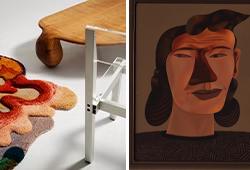Oscar Murillo
"Untitled"
Signed 'o woz ere 11'. Executed in 2011. Mixed media on canvas, mounted on canvas 187.5 x 204.5 cm
Alkuperä - Provenienssi
Carlos Ishikawa, London.
Private Collection, Italy.
Näyttelyt
Saatchi Gallery, London, "Pangaea: New Art from Africa and Latin America", 2 April - 2 November 2014.
Muut tiedot
Oscar Murillo (born in 1986, Colombia) is a painter that incorporates different mediums to the production of his artistic work, from texts or recycled materials, to fragments of any element circulating in his studio. Trained in England, between the University of Westminster and the Royal Academy of Fine Arts. His works tend towards a large format, with a chaotic and spontaneous appearance. It has a sublime but cryptic narrative and all the elements of his work lead us to a single goal: the vindication of both his Colombian heritage and the processes of fascist injustice. Works of his are included in large collections, like for example another very similar work of his with the same title, belonging to the controversial art collector Charles Saatchi.
The auction’s work has a certain sense of mutation as far as materials are concerned. Murillo transfers various ideas and materials, such as the press and any detritus that circulates through his studio. Recycled materials are the gestures that Murillo uses to refer to his Colombian past, to all that transnational identity and decolonizing processes, emitting a strong discourse against globalization, the market and capitalism. He includes words in Spanish, generally referring to food, as a small claiming element of its origins.
Murillo’s art can be compared to the expressive outbursts of Jackson Pollock, and even to the great format of Mark Rothko, who brought enormous expressiveness through his neutral and monochrome tones, but because of his origins and struggles, Murillo is often referred to as an heir of Basquiat. "I see in my work a romantic energy, balanced by a calculation in the composition. My works are contaminated in my spaces, in my workshop. Over time they judge themselves and find their own aesthetic. That is my process."
The use of silver paper to wrap the work may, perhaps, talk about using as a frame something ephemeral, wrinkled and that has no consistency, as a referential message to the concepts that are already included in the fabric. In one of the quotes from the newspaper El País he said "I reject the framework. That each work delimits its own space, that seems born of chance or is waiting to be reinterpreted as time goes by ".
There are several symbols included in the work:
• The number 11: In this case it is intuited that it is the production year of the work (2011).
• 20 N: No one in Spain forgets this date which is the date of when the former dictator Francisco Franco dies and the party of the phalanx falls. In this context, it acquires a very political message of the death of repression and the triumph of freedom of expression.
• Arepas: the word is included in the sheet just next to the magazine collage. Arepas is a classic Colombian recipe for corn bread chips.
• Woz 2: Steve Wozniak, one of the founders of Apple printed a series of false bills of two dollars with which he came to pay in an establishment. This leads us to talk about money as a fictitious construction and that it only has a value granted by those who own it and those who manage it.
• The last element is the collage of the Mayfair magazine. We can understand the image of editorial pornography as a symbol of beauty that we all enjoy but that is subject to sale, something like a kind of prostitution, or a betrayal of its message. Murillo affirms that he wants to attack the privileged society, capitalism and globalizing processes, while his work is sold by astronomical figures and is highly valued. He speaks to us through the actress Rachel Hunter, who appears on the cover adhered to the web, on the notion of fame and stardom, something he did not want to be. Perhaps as a last cartridge we could infer that he is trying to destroy the legacy of Pop Art with a direct reference to the work of Richard Hamilton "Just what is it that makes today's homes so different, so appealing?" from 1956.
Oscar Murillo has an ongoing exhibition at chiK11 Art Museum in Shanghai, "Zhanh Enli & Oscar Murillo", March 22 - May 31 2019.



























